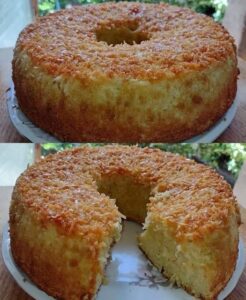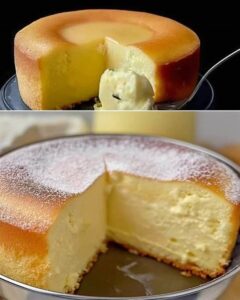Introduction:
Castella cake, also known as kasutera in Japanese, is a traditional Japanese sponge cake with a rich history and a unique texture. This light and fluffy cake is characterized by its moist and springy crumb, which melts in your mouth with each bite. Originally introduced to Japan by Portuguese merchants in the 16th century, castella cake has since become a beloved dessert in Japanese culture and is enjoyed on various occasions, from tea ceremonies to everyday snacking.
Origin and Cultural Significance:
Castella cake has its origins in Portugal, where it was originally known as Pão de Ló (Portuguese sponge cake). The cake was introduced to Japan by Portuguese merchants during the 16th century, and over time, it became a popular confection enjoyed by the Japanese people. Castella cake holds cultural significance in Japan and is often associated with festivals, celebrations, and gift-giving. It is also commonly served alongside green tea during traditional tea ceremonies.
Ingredients Quantity:
- Eggs: 6 large
- Granulated sugar: 200 grams (about 1 cup)
- Honey: 80 milliliters (about 1/3 cup)
- Cake flour: 120 grams (about 1 cup)
- Cornstarch: 20 grams (about 2 tablespoons)
- Baking powder: 1/2 teaspoon
- Water: 60 milliliters (about 1/4 cup)
- Vegetable oil: 2 tablespoons
Optional Additions:
- Lemon zest or vanilla extract for added flavor
- Matcha powder for a green tea-flavored variation
- Whipped cream and fresh fruit for serving
Instructions:
- Preheat your oven to 320°F (160°C). Grease and line a rectangular baking pan with parchment paper, leaving some overhang for easy removal.
- In a heatproof bowl, combine the eggs, granulated sugar, and honey. Place the bowl over a pot of simmering water (double boiler) and whisk continuously until the mixture reaches about 104°F (40°C). This step helps dissolve the sugar and creates a stable foam.
- Remove the bowl from the heat and continue whisking until the mixture becomes thick, pale, and tripled in volume. This may take about 8-10 minutes.
- Sift the cake flour, cornstarch, and baking powder together. Gently fold the flour mixture into the egg mixture in three additions, using a spatula.
- In a small saucepan, heat the water and vegetable oil until warm. Add this mixture to the batter and gently fold until fully incorporated.
- Pour the batter into the prepared baking pan and smooth the surface with a spatula. Tap the pan gently on the counter to remove any air bubbles.
- Bake in the preheated oven for about 40-45 minutes, or until the top is golden brown and a toothpick inserted into the center comes out clean.
- Once baked, remove the cake from the oven and let it cool in the pan for about 10 minutes. Then, transfer the cake to a wire rack to cool completely.
- Once cooled, slice the castella cake into squares or rectangles and serve. Enjoy it on its own or with whipped cream and fresh fruit.

Tips for Success:
- Be patient when whisking the egg mixture, as this step is crucial for achieving the desired volume and texture of the cake.
- Use cake flour for a lighter texture, but you can substitute with all-purpose flour if needed.
- Avoid overmixing the batter, as this can deflate the air bubbles and result in a dense cake.
- Store the castella cake in an airtight container at room temperature for up to several days for optimal freshness.
Nutritional Information:
(The nutritional values may vary depending on the specific ingredients and serving sizes.)
Conclusion and Recommendation:
Castella cake is a delightful Japanese dessert with a rich history and a unique texture. Whether enjoyed as a snack with a cup of tea or served as a dessert at special occasions, this light and fluffy sponge cake is sure to please. With its simple ingredients and straightforward preparation, making castella cake at home allows you to enjoy the authentic flavors of this beloved Japanese treat. So why not try your hand at baking a batch of castella cake and experience the joy of this traditional delicacy?
- Zucchini and Tuna Bake

- Zucchini Halves Stuffed with Tomato, Cheese, and Herbs

- Simple Blender Coconut Cake

- Bread Rolls with Sesame Seeds

- Lemon Meringue Pie

- California Spaghetti Salad

- Kentucky Butter Cake

- Marinated Cucumbers, Onions, and Tomatoes

- Cheeseburger and Fries Casserole

- Muffuletta Sliders

- Chinese Beef and Onion Stir Fry

- Orange Creamsicle Freezer Pie

- Pineapple Lemonade Punch

- Classic Chicken Caesar Pasta Salad

- Delicious Breakfast Bread
